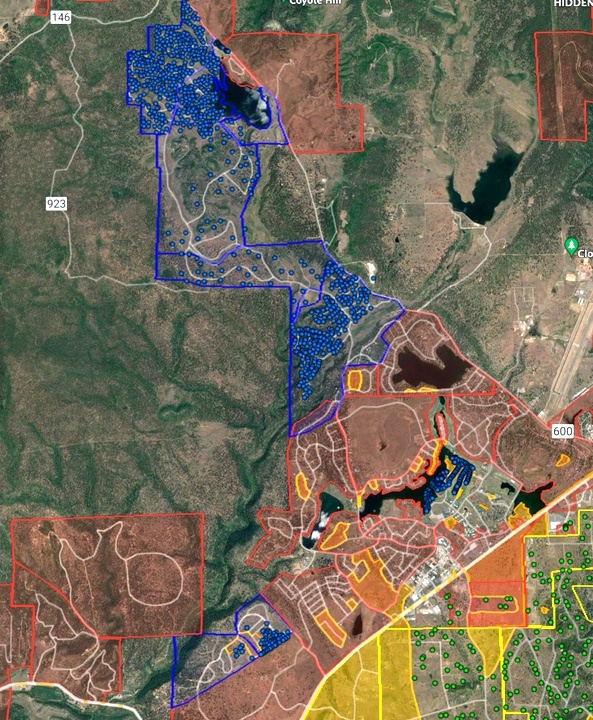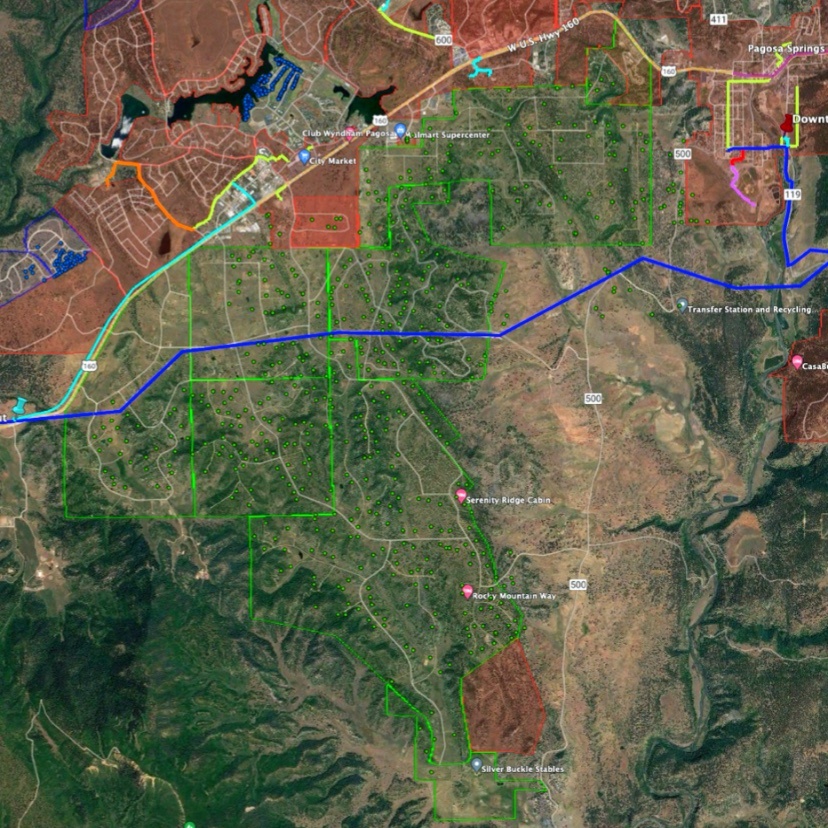A collection of mostly local business owners and government officials gathered at the Ross Aragon Community Center on Tuesday morning to hear an overview of ongoing projects in which the Pagosa Springs Community Development Corporation has been involved, over the past year.
The overview was led by PSCDC Executive Director Emily Lashbrooke. The four areas of economic development tackled by the non-profit organization in 2023 and presumably continuing into 2024 and beyond:
Workforce development
Workforce housing
Broadband fiber optic cable
The Main Street Program
Ms. Lashbrooke:
“We had 42 students complete their summer internship program. We held one CDL [Commercial Drivers License] class and graduated seven new CDL drivers. We assisted four CNAs [Certified Nursing Assistants] get into their course work and be able to provide nursing assistance, and we had one Registered Nurse who is in her last semester and she will become an RN and we have secured her a position at Pagosa Springs Medical Center.”
She mentioned the placement of a new Carrier Neutral Location building in Cloman Park — a community-owned facility that will allow various broadband providers to access the internet backbone in the uptown area. A similar building is under construction in the downtown area.
“We completed a four-way middle-mile agreement. So La Plata County, Archuleta County, LPEA and the Southern Ute Indian Tribe all committed equal funds, and DOLA matched it. It totals $4 million. We’re going to get internet from Durango to Pagosa Springs via Highway 151. If you can imagine sitting with four attorneys, from two counties, a utility and a sovereign nation for a year… and we finally came up with an MOU.
“All four entities agreed! With attorneys!”
When the Pagosa Springs Community Development Corporation was established back in 2010, as a non-profit corporation designed to serve our two primary local governments — Archuleta County and the Town of Pagosa Springs — no one had a clear idea exactly what its function might be. Pagosa was in the depths of the Great Recession; the real estate and construction industries were struggling; tourism was having a rough time; the school district was losing students.
The creation of a non-profit corporation, to help boost the economy, seemed like the right thing to do. For one thing, a non-profit would be eligible for certain types of grants that local governments do not qualify for.
In spite of annual subsidies from the Town and County governments, however, the PSCDC didn’t really find a coherent reason to exist until it formed the Broadband Services Management Office in 2019, and hired local business owners Eric Hittle and Jason Cox to run the new office. Since then, the BSMO has been helping the community chase broadband grants, and we recently heard that Mr. Hittle had assisted Visionary Communications and Clearworx Telecommunication Services.
I wrote about those two grants in a Daily Post article, earlier this month.
The Visionary grant will provide ‘fiber to the home’ in certain PLPOA neighborhoods north of Highway 160.
The blue dots indicate the addresses Visionary is proposing to serve with their $3.9 million grant award.

Visionary will match the grant with a $1.3 million contribution. None of those 1,000 addresses appear to be business addresses.
So then, a total of about $5.2 million to eventually reach these homes. Perhaps over the next two or three years?
Montrose-based Clearworx, meanwhile, had received a grant to help fund a $8.1 million project south of Highway 160, including Meadows, Timber Ridge and Alpha subdivisions. The 560 green dots on the following map suggest homes that might have new access to fiber optic cable at some point in the not-to-distant future.

So… we are looking at ‘fiber to the home’ for maybe 1,500 middle-class and upper-class homes.
To fully understand these projects, we might need to make a distinction between “homes” and “households.” According to the research I’ve read about housing in Archuleta County — notably, the 100-page 2017 Archuleta County Housing Needs Study written by Denver-based Economic and Planning Systems (EPS) — much of the housing constructed in our community since 2000 has been in the form of ‘second homes.’
From that study, on page 8:
Based on a January 2016 report prepared for Region 9, an estimated 41 percent of residential properties in Archuleta County are owned by people whose primary residence is outside the County. In a survey of these homeowners, 12 percent of these homes were reported as part- time rentals and 11 percent as full-time rentals. …
…Another indication of second home and speculative housing construction can be found by comparing the growth in households (equivalent to an occupied housing unit) to growth in housing units. Historically, 35 to 40 percent of housing units across the County have been vacant. While a small percentage of these are vacant while for rent or for sale, most are likely second homes.
Between 2000 and 2010, the County added 2,550 housing units but only 1,287 households, indicating that 50 percent of new housing units were second homes. From 2010 to 2016 this proportion increased as the County added only 187 households but 468 housing units — 60 percent of new housing units were second homes. These data points indicate that the share of second homes in the market is growing.
Adding those totals, we see that between 2000 and 2016, our community added 3,000 homes… but only 1,490 households. More than half of the houses built since 2000 appear to have been ‘second homes.’
These visitor families pay property taxes like the rest of us, but otherwise make only limited contributions to our local economy, generally speaking. They don’t pay year-round sales tax like the permanent residents do, nor do they typically work at productive jobs.
I don’t mean this as a criticism. Just stating the facts.
So as I write this editorial, I cannot say for sure whether most of the taxpayer investment in Pagosa broadband is, in fact, serving homes that are occupied only a couple of months per year.
I wonder if anyone knows?

